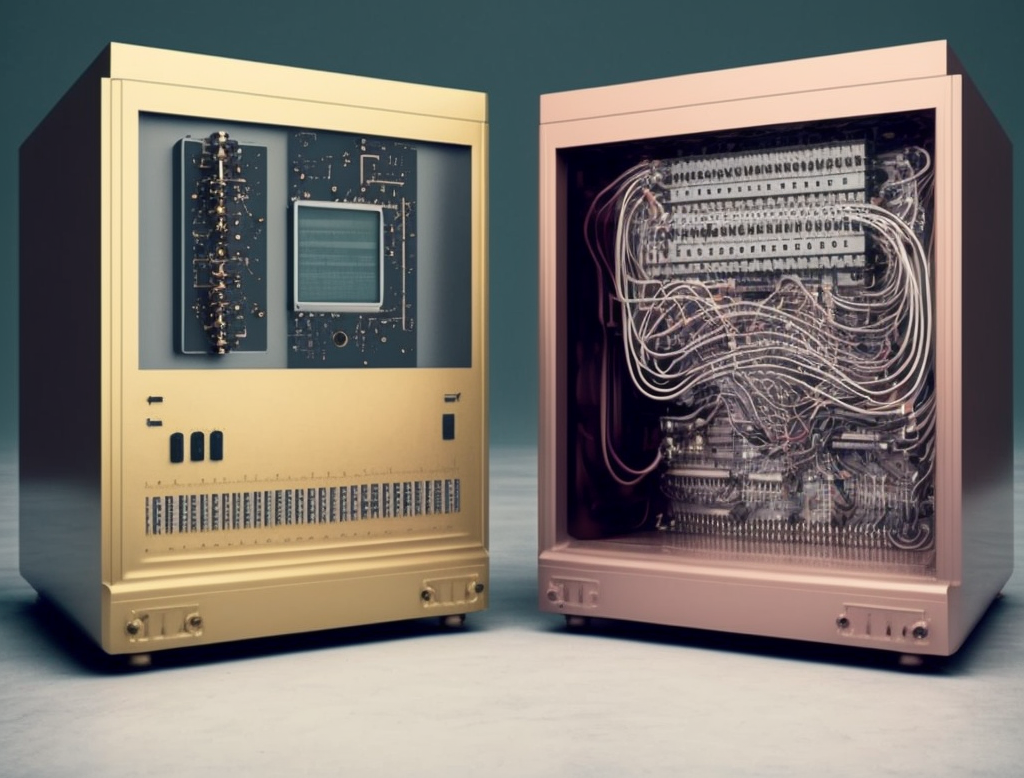In today’s fast-paced world, technological advancements have become a regular occurrence. One term that has been making waves in the tech realm lately is “Nanocomputing.” This groundbreaking concept involves the manipulation and representation of data using computers that are even smaller than microcomputers. Imagine devices with transistors measuring less than 100 nanometers in length; that’s where the intrigue begins. The goal now is to create computers that are tinier than 10 nanometers. Nanocomputing holds the key to overcoming the challenges associated with nanoscale computing technology, ushering in a new era of possibilities.
Nanocomputing Unveiled
Nanocomputing, in essence, is the solution to real-world problems that have long hindered progress due to limited computing power. With the advent of nanocomputers, the constraints of space have become a thing of the past. These minuscule marvels can seamlessly integrate into any environment, including the human body. Within the realm of nanocomputing, two categories deserve special attention: DNA nanocomputers and quantum computers.
DNA Nanocomputers: The Future of Computing
Drawing inspiration from the human body’s DNA, nanocomputing harnesses nanoscale structures, such as DNA and proteins, to create computational powerhouses. What sets DNA nanocomputers apart is their ability to solve problems at lightning speed by exploring all potential solutions simultaneously. This is a significant departure from conventional computers, which follow a step-by-step approach to problem-solving. Furthermore, the limitless rearrangements of DNA through gene-editing technology enable nanoscale computing without the constraints of processing time.
Quantum Computing: Beyond the Conventional
Quantum computing introduces a paradigm shift by leveraging the dynamics of subatomic particles to store and manipulate data. The capabilities of quantum computers far surpass those of their classical counterparts. Governed by the laws of quantum mechanics, these computers offer rapid solutions to complex problems while occupying minimal space.
Applications of DNA Computing
The applications of DNA computing are vast and transformative:
- Overcoming Transistor Tunnelling: DNA computing provides a solution to the challenges posed by transistor tunnelling in microcomputing.
- Transistor Switching: The DNA switch can be genetically programmed to produce or inhibit the production of specific proteins, opening doors for innovative applications.
- Disease Diagnostics: DNA computing can revolutionize disease diagnostics, offering precise and efficient tools for early detection and treatment.
- Biological Nanocomputers: The potential of biological nanocomputers extends into various fields, from medicine to environmental monitoring.
Applications of Quantum Computing
Quantum computing promises to reshape multiple industries:
- Big Data Processing: With the ability to handle astronomical data volumes, quantum computing simplifies complex data analysis tasks.
- Transportation Logistics: Quantum computing elevates transportation logistics to new heights, optimizing routes, reducing fuel consumption, and enhancing overall efficiency.
- Economic Modeling: Predicting and mitigating economic downturns becomes more feasible with the computational power of quantum computers.
- Drug Development: Quantum computing accelerates drug discovery by simulating molecular interactions and speeding up the research process.
- Disease Research: Deeper insights into disease development and treatment options are made possible through advanced computational models.
- Autonomous Vehicles: The development of driverless cars is greatly expedited by quantum computing’s prowess.
- Machine Learning: Quantum computing contributes to the evolution and improvement of machine learning algorithms, unlocking new possibilities in artificial intelligence.
In conclusion, nanocomputing, with its DNA and quantum computing branches, is at the forefront of technological innovation. These tiny yet powerful computers are poised to revolutionize industries and solve problems once deemed insurmountable. As the world embraces the era of nanocomputing, the possibilities are limitless, and the future is brighter than ever.










Leave a Reply